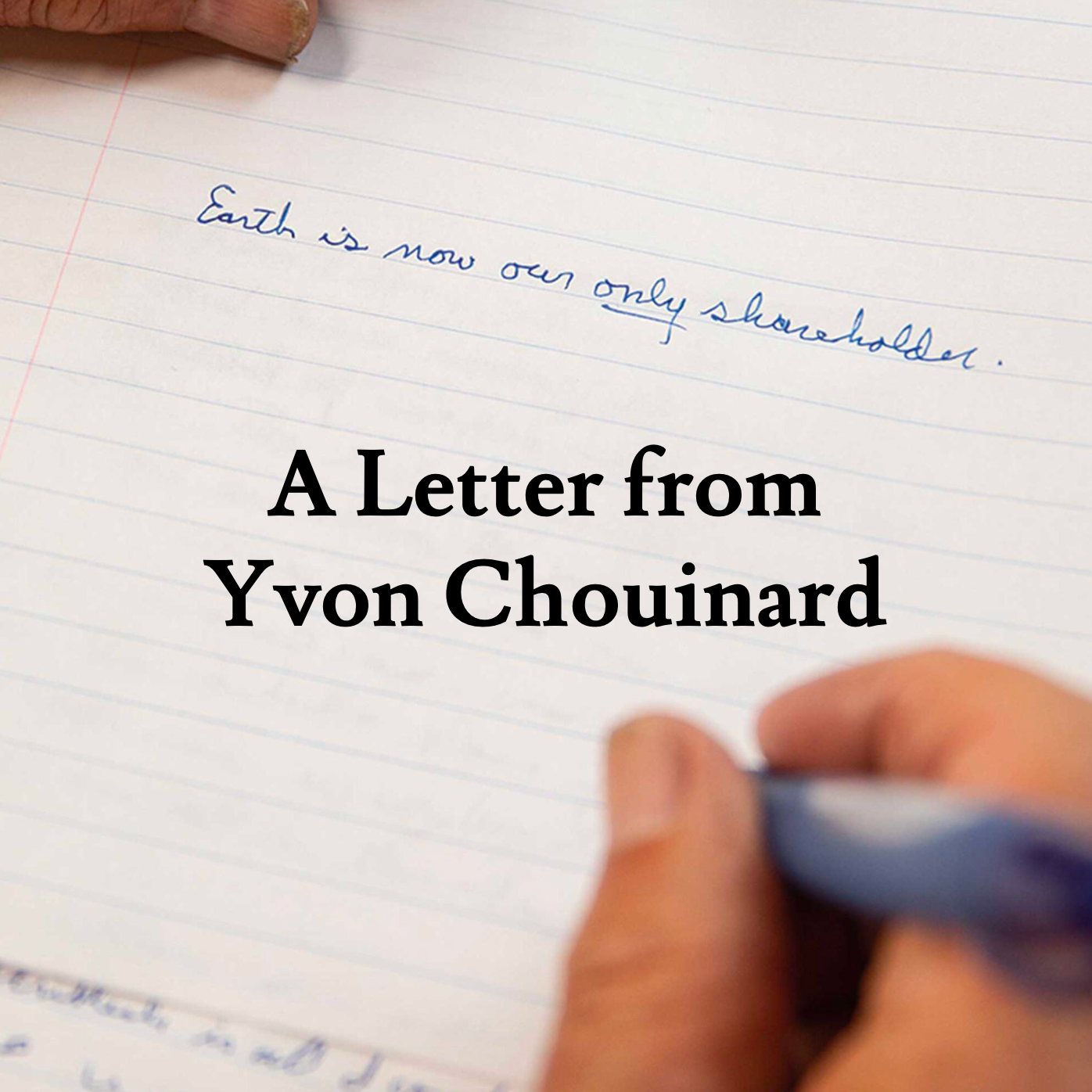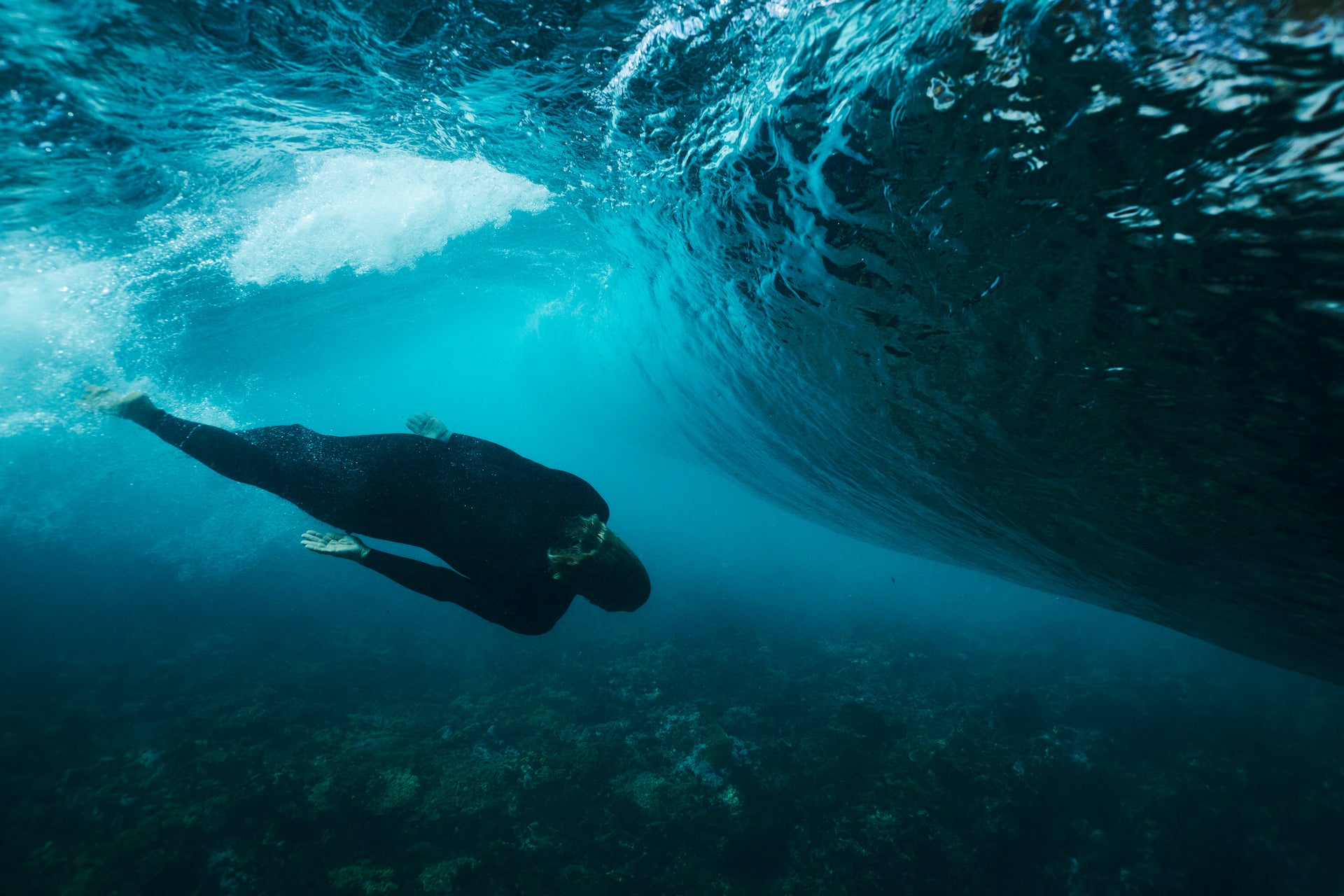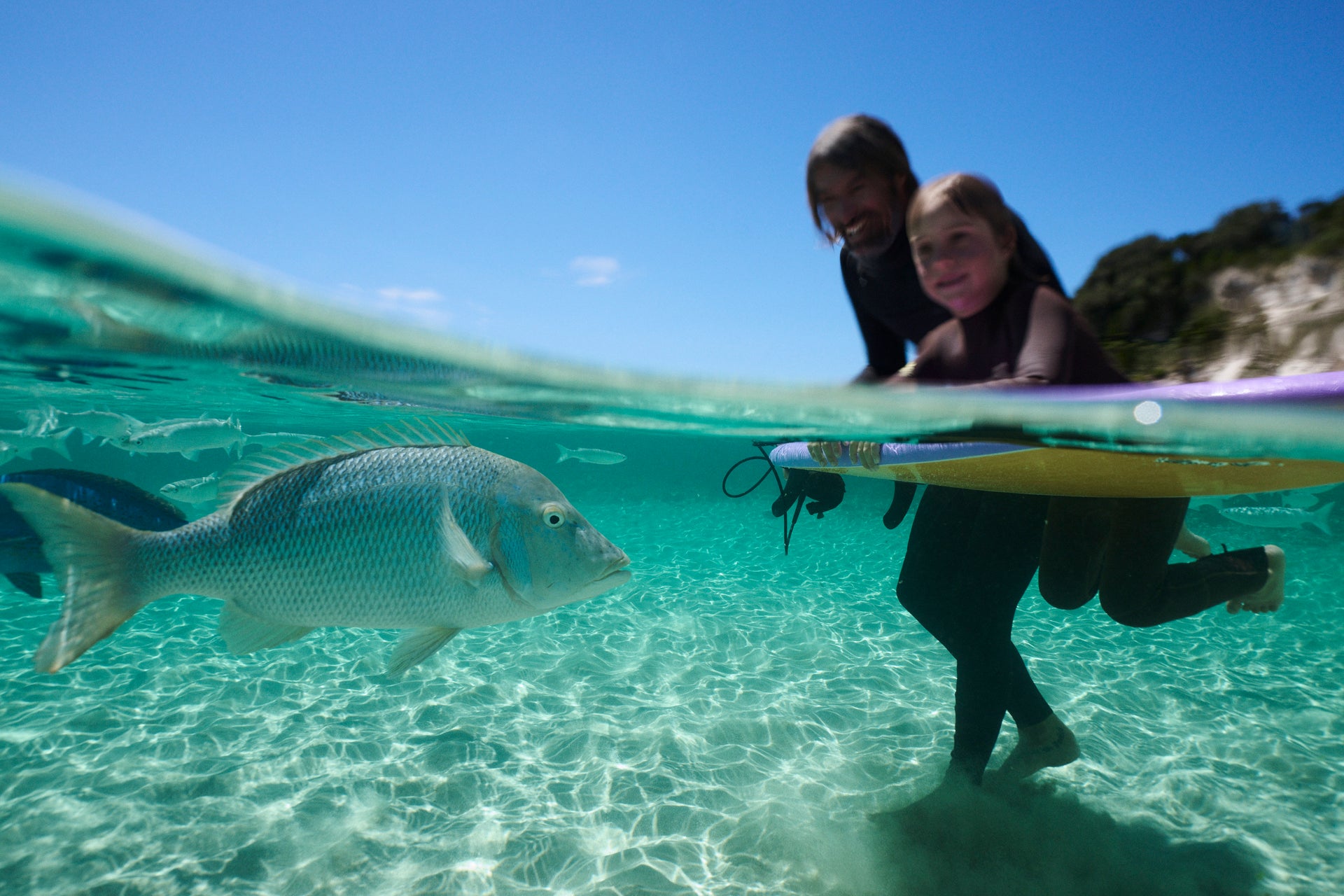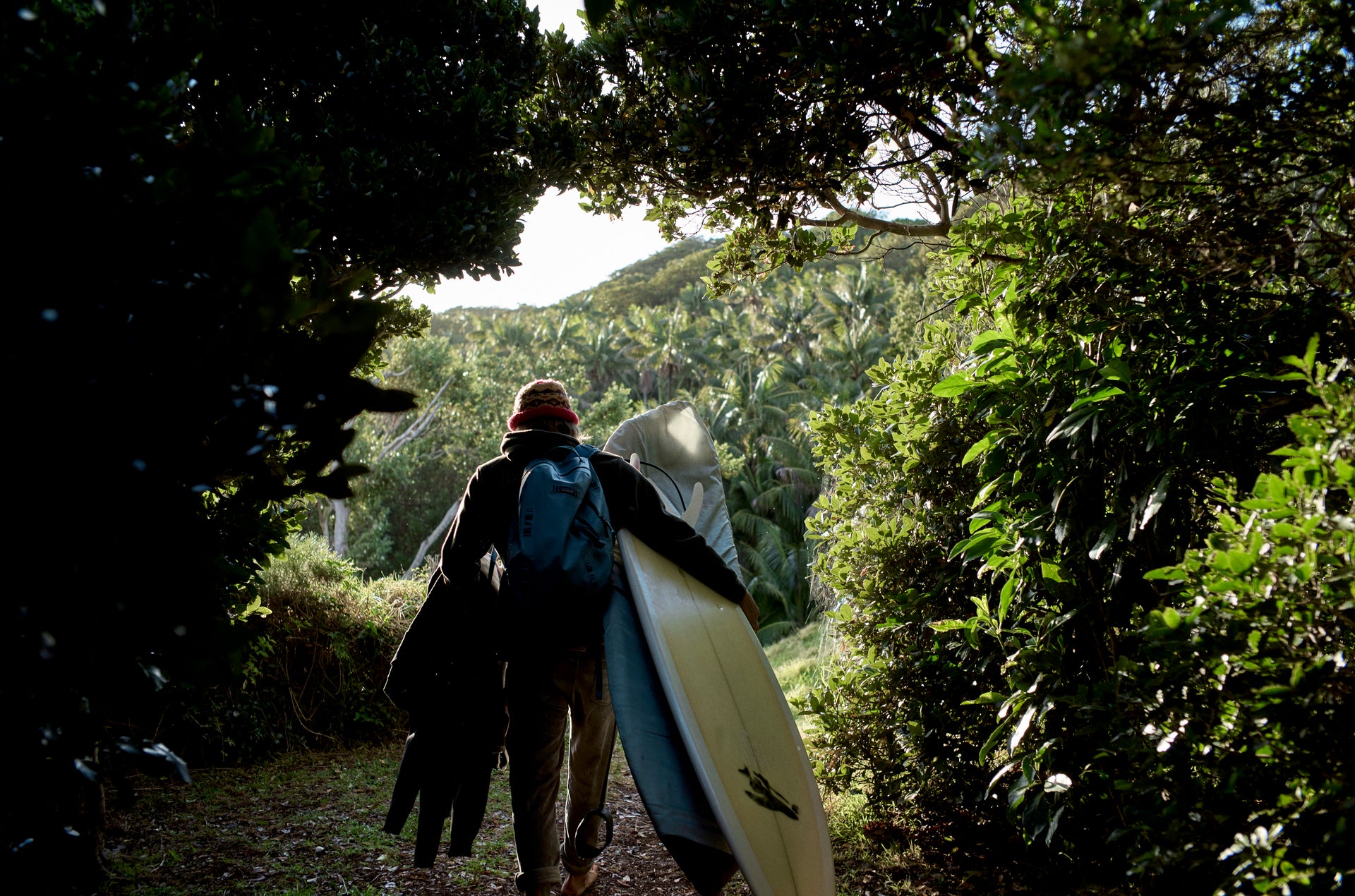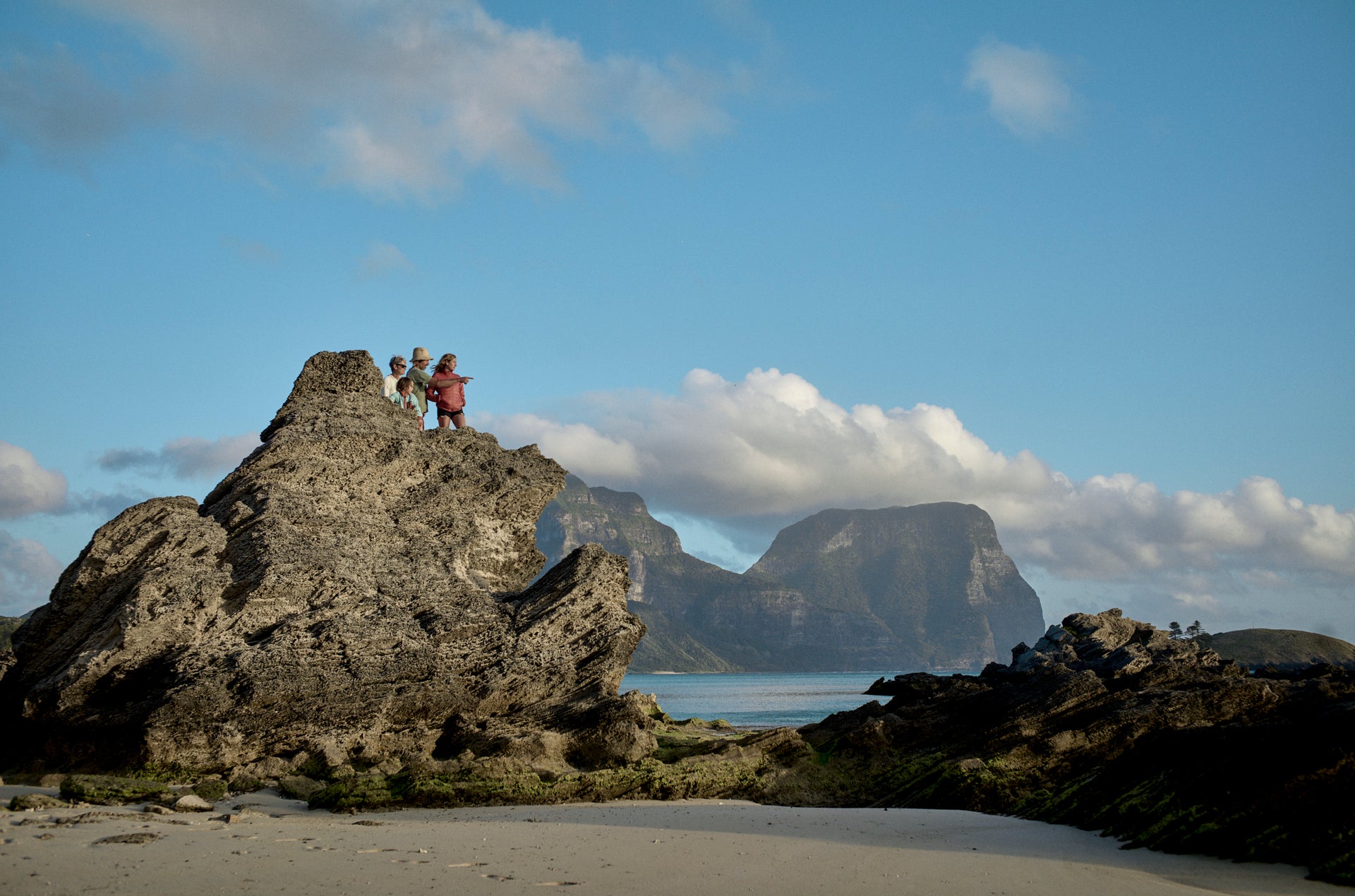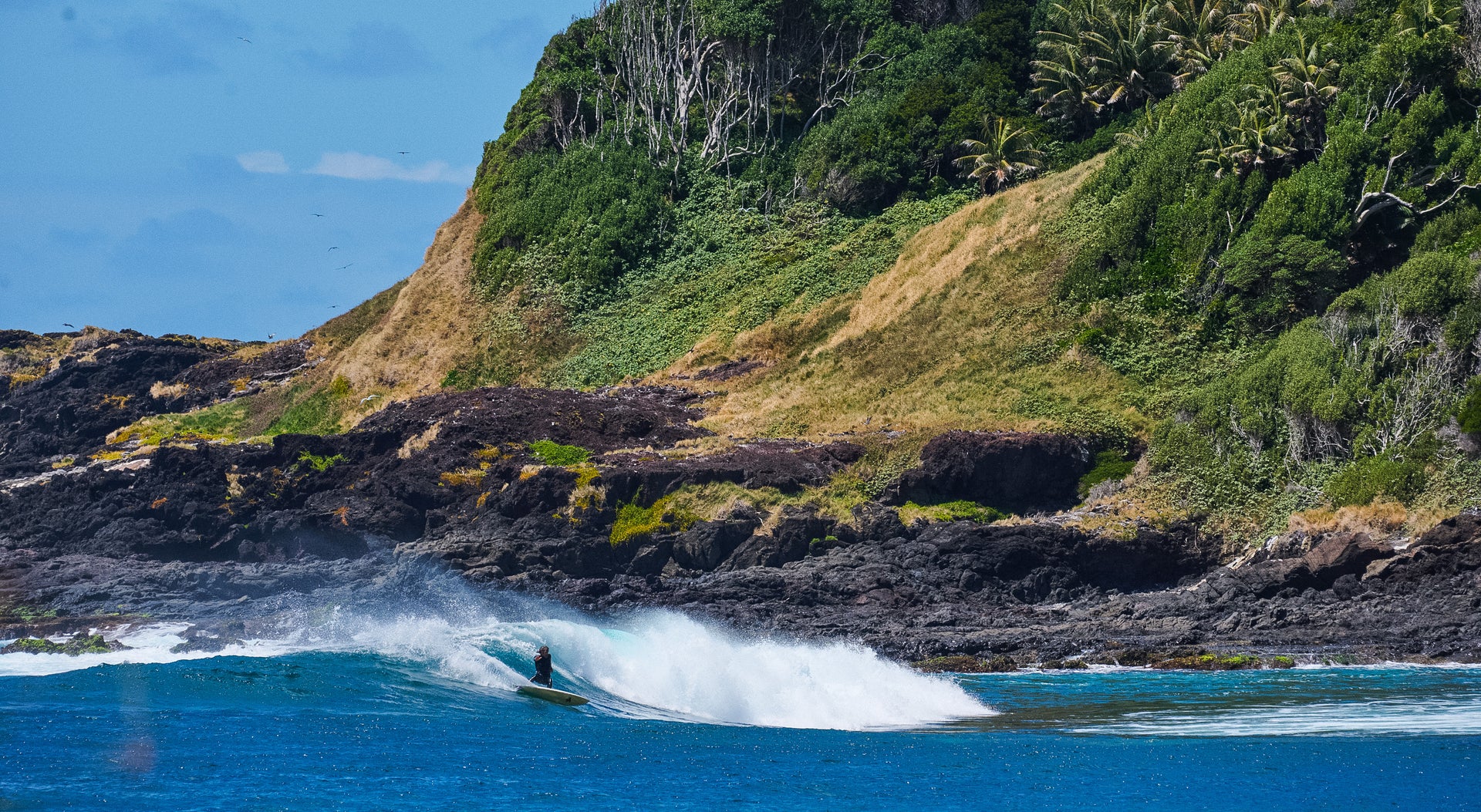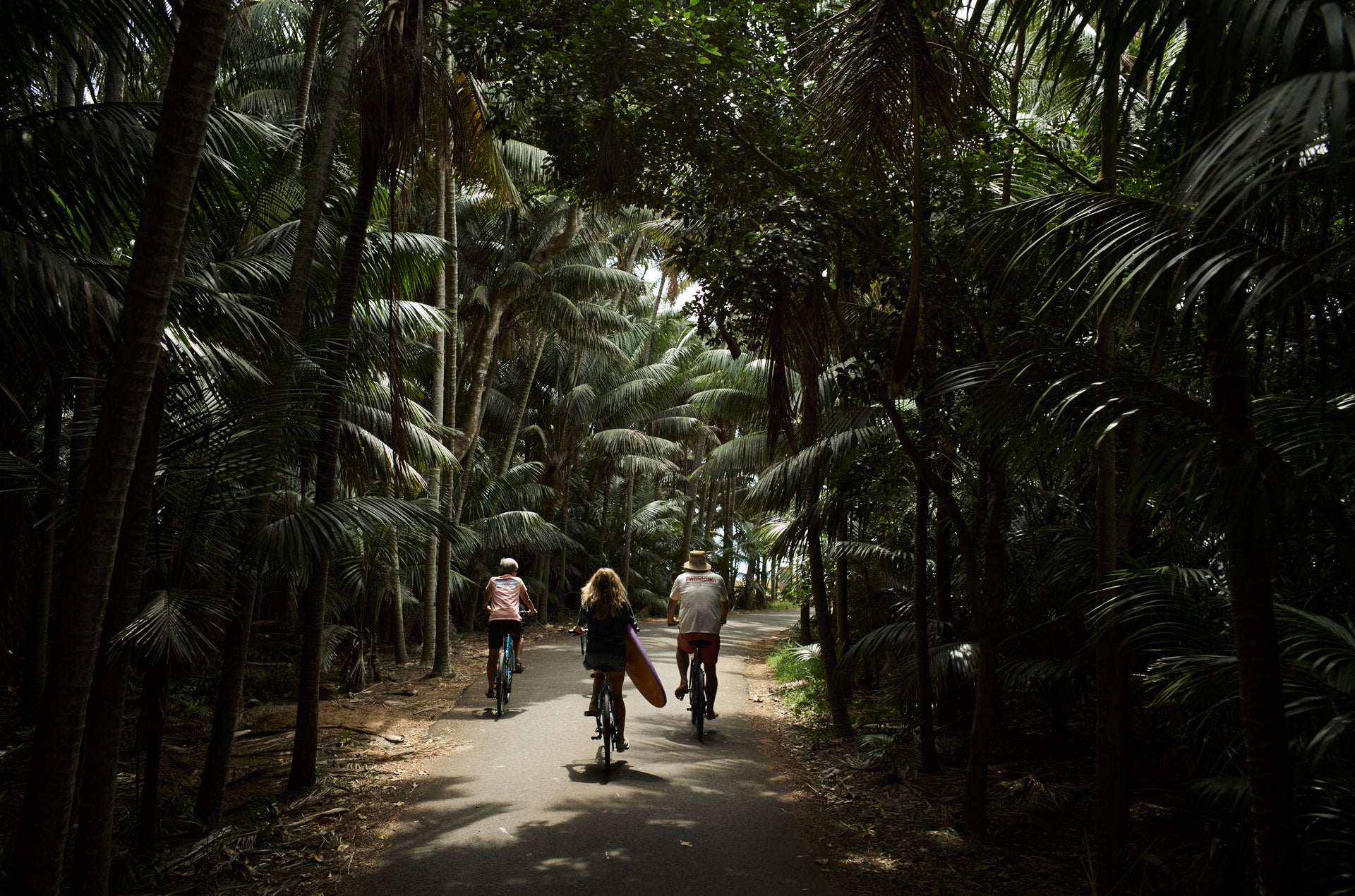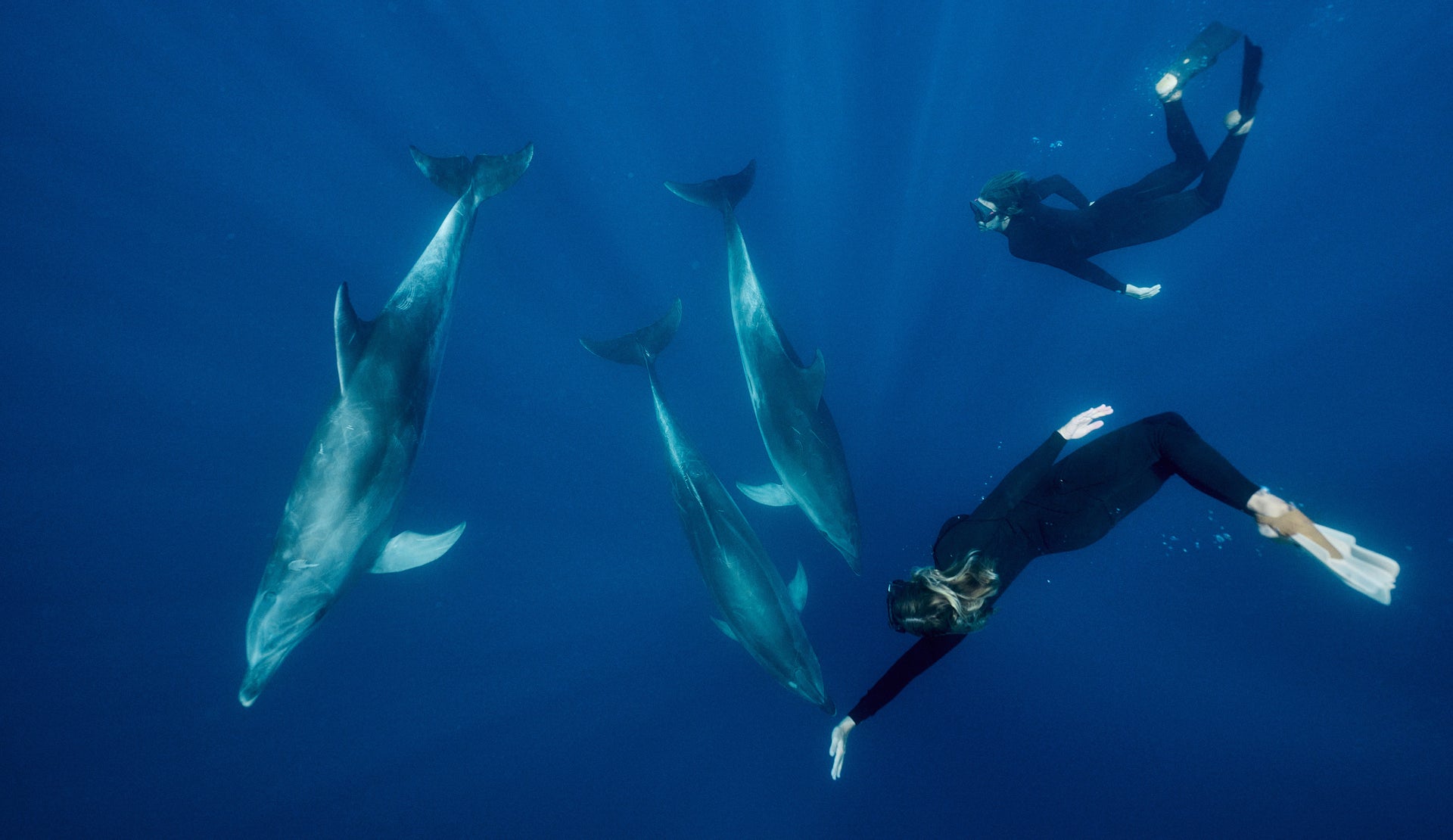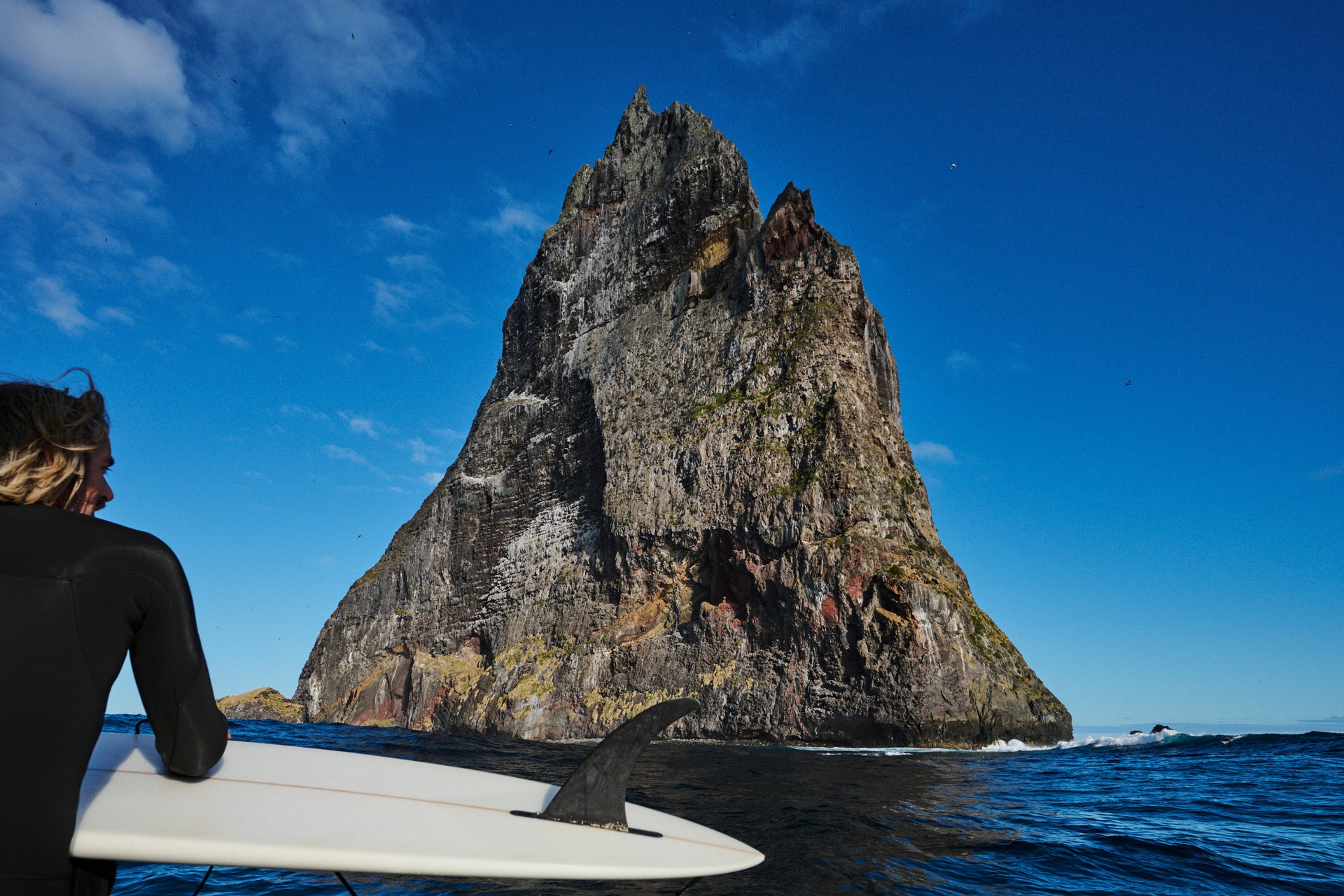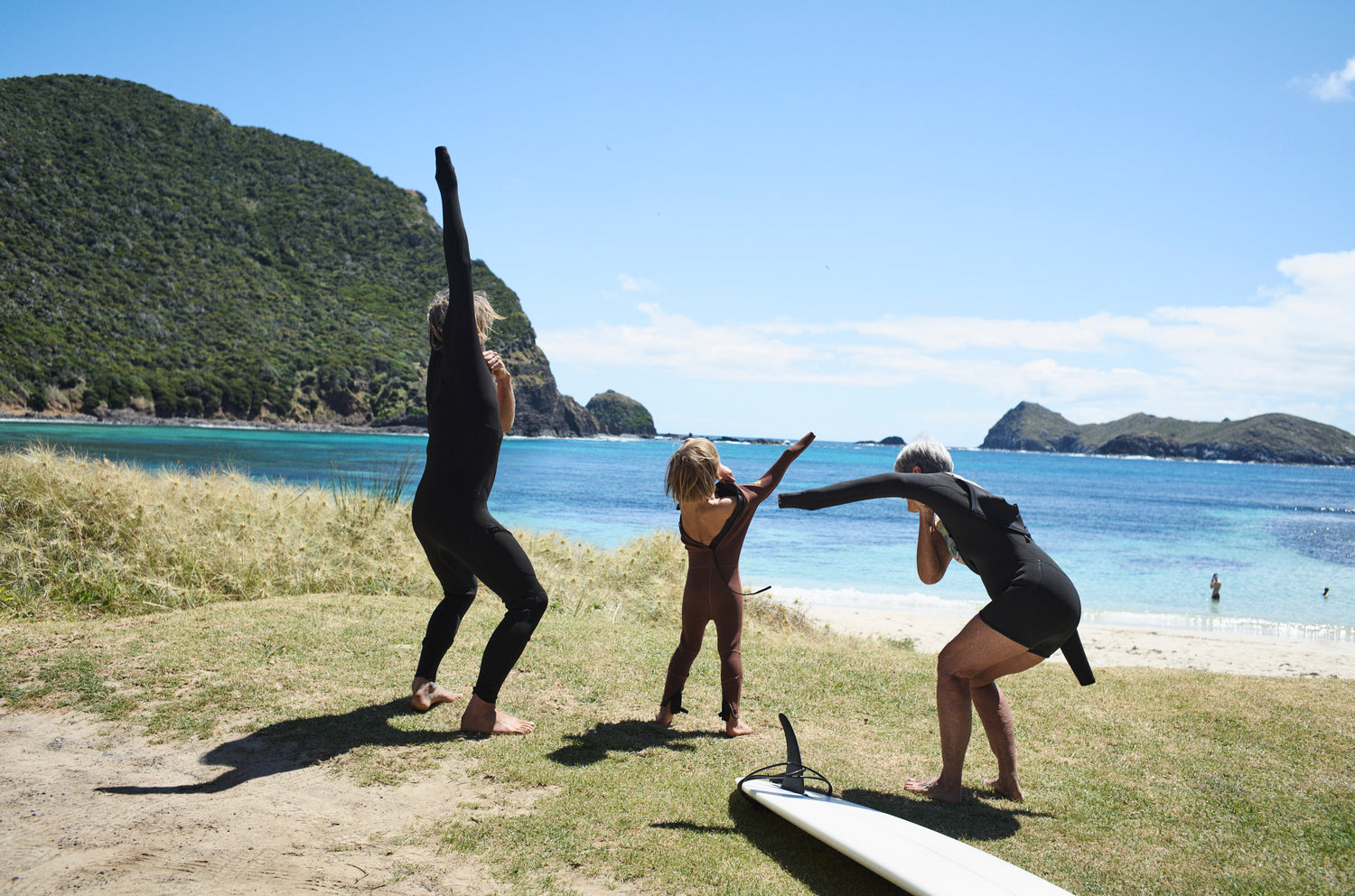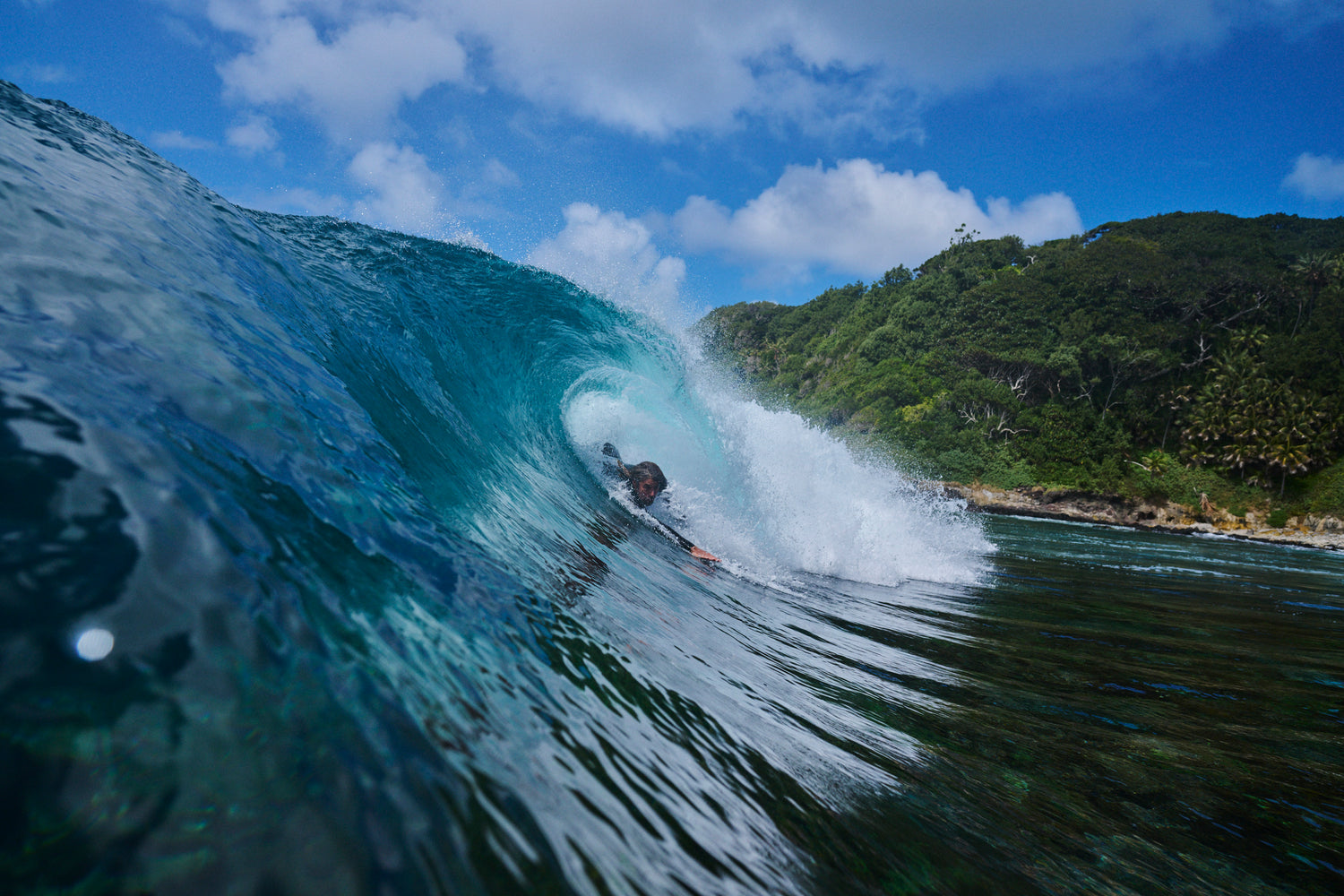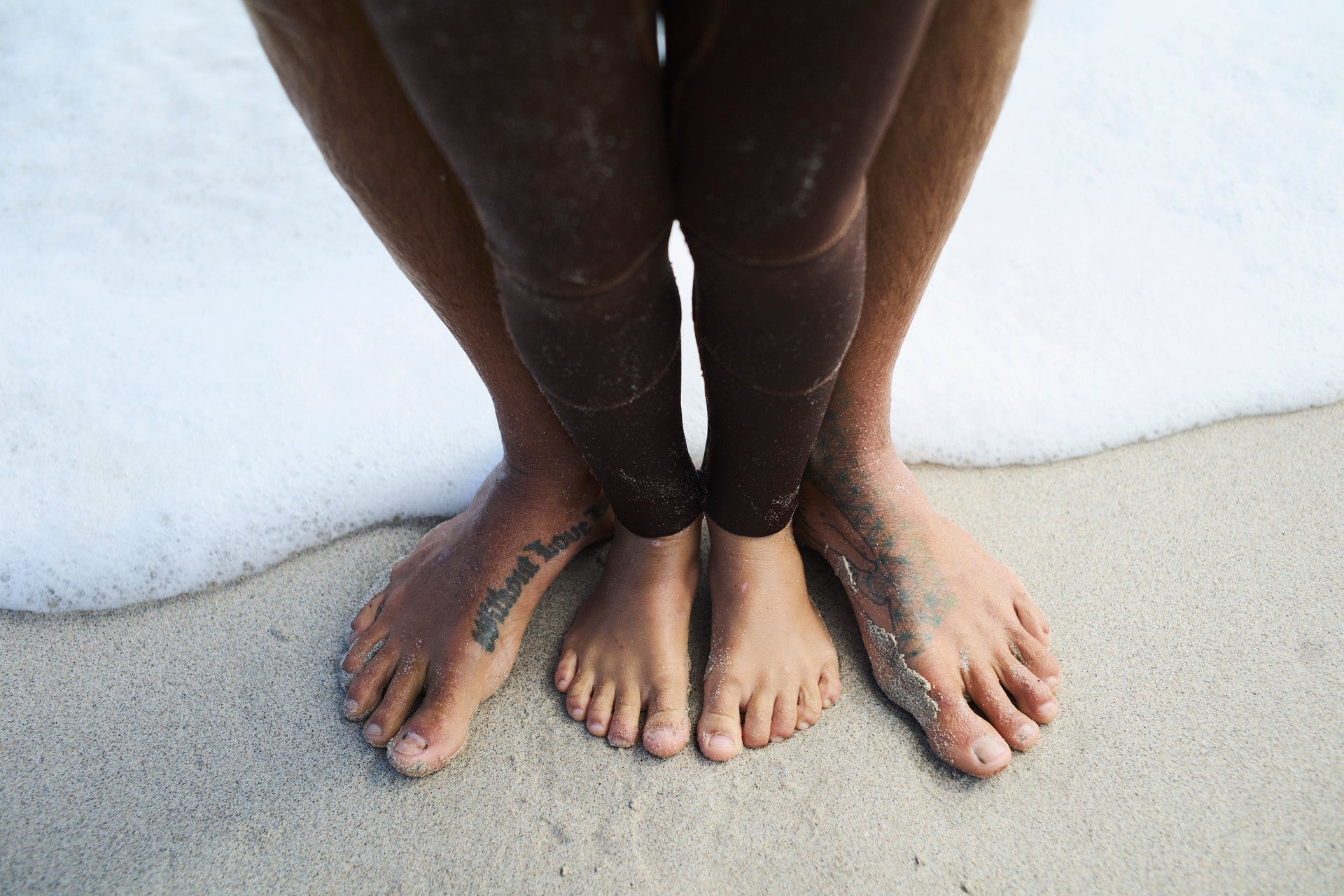A twinnie, a single fin or simply a wettie and your bare feet – it all works out okay in the end. Dave tests out the speed of his in-built flippers over the world’s most southern true coral reef. Photo Trent Mitchell
Less than 3 per cent of the world’s ocean is fully protected (at least on paper) from our harmful extractive practices – think industrial fishing via bottom trawling and long lining, energy industries drilling for oil, gas and using seismic testing, and our latest dumb idea of mining the seafloor for minerals. In Australia we see this happening right now between the southern states of Victoria and Tasmania where multinationals TGS and SLB are planning to seismic blast 5.5 million hectares of ocean, including whale sanctuaries and a marine park within the Bonney Upwelling.
Effective enforcement of that meagre 3 per cent of protected ocean is difficult. International waters, jurisdiction complexity, poacher’s murky vessel registrations and the sheer size and difficulty of enforcing rigid laws in the wild ocean all contribute to “paper protection” being common. My own experiences of seeing dynamite fishing off the shores of Indonesia’s Alas Purwo National Park (G-Land) and, on a more local level, people still collecting in “no-take” zones in my local Cape Byron Marine Park illustrates the need for communicating clearly to each other that these marine sanctuaries are good – not just for the fish, but also for us if we want to be able to catch and collect local species to feed our families into the future.
“Fish school up and encircle you in the shallows of Ned’s Beach, gazing up at you with round rainbow eyes as you feed them by hand.” Dave and his boy Minoa meet the Lord Howe locals at Ned’s. Photo Trent Mitchell
My most confronting experience of a marine protected area lacking enforcement came in the Galapagos Islands in 2007. While onboard the Sea Shepherd Conservation Society’s direct-action vessel the Steve Irwin we removed nine miles of illegal baited long lines that sat deep within the islands’ Marine Protected Area. Though the long line is an indiscriminate killer, the people deploying them were after shark fin to supply a factory ship that sat just outside of the Marine Protected Area, ready to receive and then run the fins all the way west across the Pacific.
We pulled up rays, sharks, pelagic fish and turtle ensnared in the lines and jagged on the hooks. When we spotted the shark-finners deploying more line inside the marine park we began a short-lived chase to identify them and alert the authorities. The long line monofilament they threw overboard wrapped around the forward thruster of the Irwin and we stopped the chase. I was singled out as the one to dive in and cut the line from the propeller, probably because I was the least useful and most expendable person on board. Turns out surfing is not a very valuable skill! Who would have thought? Anyway, knife in hand and mask on I dove down and started cutting the line off the prop until I ran out of breath. When I turned around to swim from under the barnacled hull to the surface I froze in shock. There in front of me suspended in crystal clear deep blue water were miles of ghostly line stretching out like a spider web in all directions. Hanging from the lines were the limp dead forms of animals meant to be under full protection from our most harmful human ways. Knowing these rays, turtle, sharks and fish were protected on paper, though regularly killed by poachers within the park, made that macabre image all the more tragic for me.
Mornings on Lord Howe are okay. Dave takes the boards for a stroll through the palms on the eastern side of the island. Photo Trent Mitchell
We know when we get things wrong with the ocean. Our spilled oil on choking animals and beaches is obviously a shocker. Plastic that we have led to the ocean, termed “marine debris” as though it was always part of the place, will outweigh all the fish in the ocean by 2050. Seabirds’ bellies full of more plastic than fish. Marine heatwaves wiping out huge swathes of coral around the world. We surely now know what we are doing wrong. But what are we doing right? How can we learn from the places and people who have got it right for a while now and established a balance of sorts that sees human needs met without the destruction of all else?
There are places we can take ourselves to feel this kind of relational balance in our bones, smell it in the clean air, taste it in the uncontaminated food and marvel at our small place within this circle of life.
Lord Howe Island is a place those of us in Oceania can visit to feel this balance, then emulate it in our own way when we return to our home waters.
Kin is all about family. Dave, Lauren, Minoa and Dave’s mum Yvonne travelled across the seas to visit one of the most remarkable islands on earth. Photo Trent Mitchell
My family and I travelled 600km southeast of our home to arrive on the island within a gale force northeast wind typical of spring. The towering twin peaks of Mount Gower and Mount Lidgbird, at the southern end of the island, inspire the same head-tilting awe as all Pacific Island peaks. What struck me instantly though was how those mighty green cathedrals abruptly joined rolling hills, white sand beaches and palm valleys that looked just like our home regions in Oz. Think Byron meets Seal Rocks crossed with Tahiti.
Is there surf on Lord Howe? Photo Trent Mitchell
Lord Howe was first spotted in 1788 by Lieutenant Henry Lidgbird Ball who was en route between Sydney and Norfolk Island. The island was settled by three couples from New Zealand in 1834 and became a beacon of supplies for passing whalers who criss-crossed the world’s ocean, swiftly decimating whale populations and giving yet another tragic demonstration of European industrialists’ short-sightedness. When the whaling boats stopped, tourism started along with an emerging seed-collecting scene – locals laboriously collected kentia palm seeds to service the indoor plant craze in Europe. Boats and seaplanes began regularly visiting the island in 1945, after World War Two, and established the tourist economy which still dominates the island today.
When reading through islander Mary Hines’ history and holiday guide – written in 1960 and still distributed on the island – you can’t help but hear the love for the place and wildlife that kept “settlers from loneliness”.
“On our first day on Lord Howe, we rented some pushbikes and began riding around the island with my mum and our six-year-old, who was in disbelief that going somewhere meant doing skids and jumps all the way there.” Dave, Lauren and Yvonne roll on down the hill to Ned’s Beach. Minoa is already there. Photo Trent Mitchell
On our first day on Lord Howe, we rented some pushbikes and began riding around the island with my mum and our six-year-old, who was in disbelief that going somewhere meant doing skids and jumps all the way there. In between the loud pulses of gale-force wind, we could hear birdsong from a few of the 200-plus different bird species that inhabit the island.
When we rode out of a palm and fig tree grove onto Ned’s Beach, we were stalled by the Pacific gale. We made our way through the decorated dune line full of the celestial shapes of spinifex grass stars, and thousands of birds within them. Speckled eggs lay uncovered and sooty terns hovered everywhere, dancing in the lift of the onshore wind. One landed on our boy’s shoulder momentarily. He collapsed with laughter, and so did we. It felt so good to not be feared. The delicate terns tolerated us and then landed back with their eggs.
“My mum Yvonne, partner Lauren and I have all been fashioned into water people through surfing.” The saltwater legacy is being passed down to Minoa as this little clan of multi-generational surf rats stroll down to a sneaky left down in the corner at Ned’s Beach. Photo Trent Mitchell
Locals Dean Hiscox and Jack Shick later told us that when they were kids on the island through the 1970s, ‘80s and ‘90s, Ned’s Beach and nearby Blinky Beach had no activity like this. In early reports from island settlers, they gush over the bounty of seabirds and turtles along the shores, but over time the shore birds disappeared, due to hunting and the introduction of invasive species. In recent years, the local community have worked hard to remove the pig, goat, feral cat and rat populations that were killing the birds and destroying their habitat, and seabirds began to return to the island. Now, they number in the tens of thousands.
While speaking with Dean about the history of caring for the island and the levels of protection that are now in place, he is quick to acknowledge that before there were government levels of protection status like Lord Howe’s UNESCO World Heritage listing, established in 1982, and the establishment of the Lord Howe Island Marine Park and Commonwealth Marine Park that extends for 12 nautical miles, it was the people of the island, with a deep love for the place, that cared for it.
The booming seabird populations, the thick dawn chorus of birdsong, and the obvious biodiversity within the island’s plant kingdom illustrates the effectiveness of humans caring for country throughout generations. We wondered if the ocean would feel the same.
Monday morning blues, a 600 metre deep oceanic trench and an inquisitive pod of dolphins. Dave and Lauren learn some new dance moves. Photo Trent Mitchell
We joined Azza [Aaron Ralph], on his Dive Lord Howe fast boat and zoomed out through the southern channel of the lagoon, passing the twin peaks before heading towards Balls Pyramid, which sits 23km away from Lord Howe. At the halfway point, we slowed down and stopped, surrounded by an inquisitive dolphin pod. In 600 metres of deep blue water, we swam with the big-brained cetaceans who wondered what was wrong with us when we failed to respond as they scanned us with sonar and send whistles, sending clicks and zaps our way. They held a little more interest in us when we dived deeper and displayed more aquatic dexterity than flapping noisily on the surface.
Dave susses out the lineup at Balls Pyramid – the most beautiful (and quite possibly the weirdest) novelty wave on earth. Photo Trent Mitchell
Soon we arrived at the base of Ball’s Pyramid, the world’s largest stone stack and most naturally gothic dragon castle fantasy structure ever created. Lauren, Azza and I surfed a left off the southwestern corner, where the left actually runs through the right that’s wrapping from the other side of the stack. The weirdest place any of us have ever stood on a wave. Thousands of terns, boobies and petrels circled the stack above, while below, flashes of fish encompassed the world’s most southern coral reef. Sharks abound, here. Coral gardens cradle stones that have recently dislodged from the pyramid and forever found a home beneath the waves.
Since 1861 scientists and artists have visited the Lord Howe Island group to observe and marvel at all that occurs in such an isolated place. Nowadays, it seems that all visitors and locals are enticed into a state of keen observation.
My mum Yvonne, partner Lauren and I have all been fashioned into water people through surfing. For better or worse, we are obsessed with waves and patterns. Weather patterns, wave refraction, currents and cloud formations – they all help us feel like we are somewhere. That we are alive in a dynamic world, and we better pay attention, or we might feel lost, overwhelmed and without a sense of direction. Out of the loop.
Loop is exactly the right word. On this island that feels like an echo of everywhere, the circle is the dominant shape. Birds whirl overhead, hovering above eggs in round nests and hollow burrows. Fish school up and encircle you in the shallows of Ned’s Beach, gazing up at you with round rainbow eyes as you feed them by hand. Dolphins dance around us less-skilled wannabe marine mammals. A halo of seabirds crowd Ball’s Pyramid, spinning as they ascend. Us humans circle up into a group as we turn in the water to keep Galapagos sharks in front of us. Local people speak of growing up on the island, leaving to get a sense of the world, then inevitably returning, like migratory birds fulfilling a cycle.
All these thoughts swirl around in my mind as I watch our six-year-old boy Minoa marvel at the living world around him on this deeply loved island. I hope that these will be baseline moments that stay with him for the rest of his life, in the same way my moments as a six-year-old in New Zealand have stayed with me.
From father to son – the Rastovich in-built flippers are a handy thing to pass down to the next generation. Photo Trent Mitchell
An Echo of Everywhere: The Lord Howe Loop

